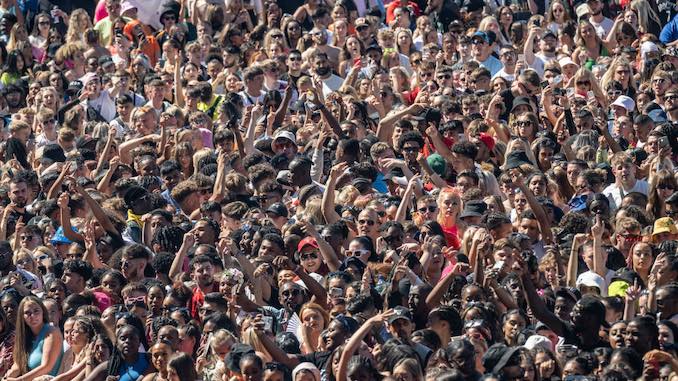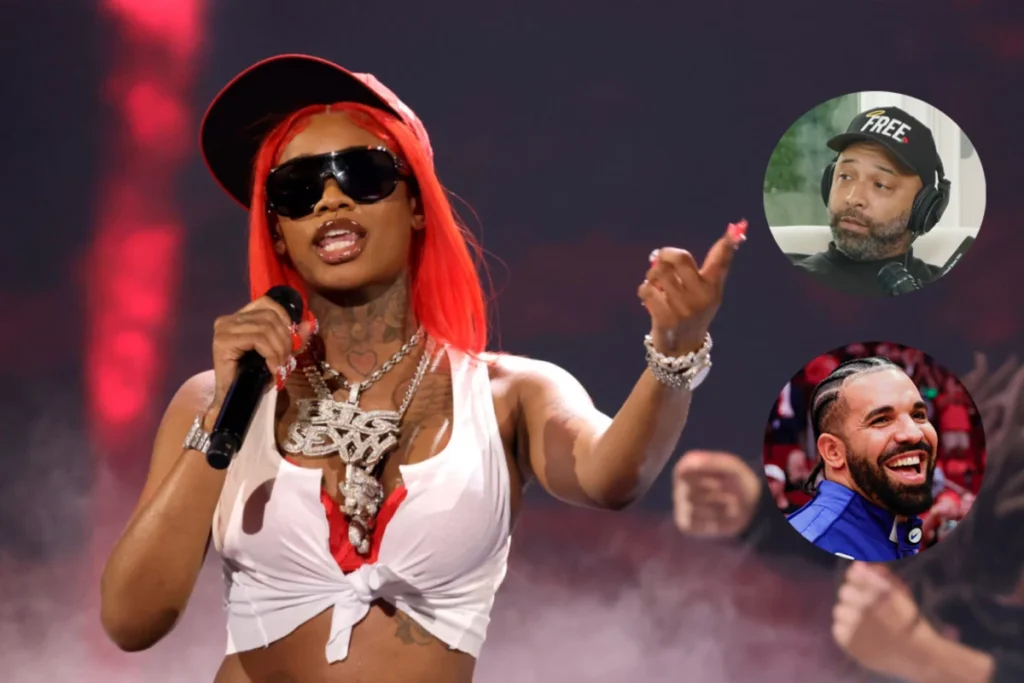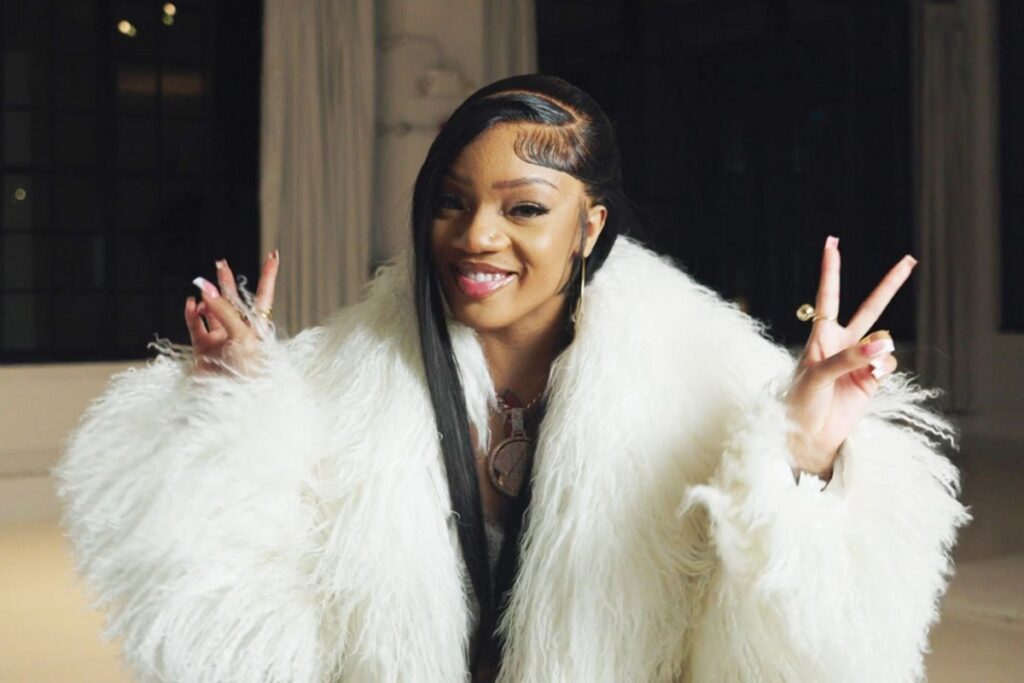Live music is back! After a year and a half of isolation and virtual concerts, artists from every genre began to tour again in 2021 and now, halfway through 2022 and with festival season in full swing, it almost feels like the Before Times of concert-going. Almost.
A 2021 Billboard analysis found that the post-quarantine concert boom was heavily driven by first-time concert attendees. The demand for concerts and live experiences is greater than ever, with Billboard reporting a 300% increase in searches for festivals and concerts compared to previous years. But the kinds of people who are buying tickets are a completely new group that has just emerged from isolation. And after reports of mass injuries and faintings and a more hectic return to live music, we need to ask: Are the kids alright?
So let’s spare a thought for the kids—not just any kids, but the hordes of Gen Z teenagers who lost their formative years to isolation and quarantine. Anyone who was on TikTok in 2020 and 2021 could witness the spiraling of an entire generation. These were the years when you’re supposed to be able to test the waters of freedom and independence. But with no world to venture into, the quaran-teens could only descend deeper into digital culture.
The result was increased social media usage and obsession. Specifically through TikTok, many musical artists found a new life or increased popularity through trending songs and an audience with nothing to do but listen. While artists like Harry Styles, Billie Eilish and Lorde already had passionate younger fanbases, many Gen Z teenagers latched onto new artists. Musicians like Mitski, Phoebe Bridgers, Lucy Dacus and Olivia Rodrigo saw their popularity skyrocket among younger fans.
Obsession is a quintessential part of growing up, but the way young fans latched onto these artists during isolation was something else. Parasocial relationships were bound to happen as teenagers abstracted these artists into the personas Gen Z created based on their discographies. But with only past videos and interviews to pore over, these teenagers turned the idea of seeing these artists live as the fulfillment of their understanding. They knew all the words to every song, they knew their favorite artists’ philosophies. The missing piece was an experience beyond a phone screen.
The problem is that these young fans want the most intense versions of a concert experience, without having any familiarity with the realities of what that entails. The desire to get barricade and be as close to their idols as possible has led to camping out on a scale that is unheard of for artists like Bridgers and Mitski, who had previously been relatively popular indie musicians. However, their growing fan bases have become more reminiscent of those belonging to massive pop stars. Camping out 20 hours for Harry Styles is almost understandable, but for Phoebe Bridgers? It’s a bigger leap.
So what happens when a bunch of teenagers are desperate to have in-person experiences, while also developing slightly obsessive relationships to their favorite artists, and have never been to a large-scale concert before? As you could expect, absolute chaos. While faintings and medical emergencies have always been a possibility at concerts, the frequency has become alarming in recent months. A recent Bridgers show in Toronto saw an excessive number of injuries and medical emergencies, with one attendee saying it was the worst she’d ever seen.
Firsthand accounts on TikTok went viral as people filmed younger fans rushing toward the stage to get barricade, pushing people out of the way and disregarding the honor system of “first come, first served” that has existed for decades.
the great toronto phoebe bridgers barricade migration of 2022 (colorized) pic.twitter.com/8cEiRnjduR
— lia (@beeefyfridgerss) June 9, 2022
And it hasn’t just been one show: Attendees of several Bridgers shows have reported extreme crowds. Reddit and Twitter are filled with testimonies from attendees witnessing multiple medical emergencies that stopped the show from Montreal, to Tampa, to Birmingham. The same has happened for recent Mitski and Billie Eilish shows. There is a common denominator: The people getting injured are mostly younger, likely first-time concert attendees. They’ve never been in tight crowds. Camping out for hours on end is for experienced fans, and these kids are doing it without much food and water, in record-high summer temperatures, all while wearing barely broken-in Doc Martens.
But this concert insanity isn’t only causing injuries. Towards the beginning of her tour, Mitski’s team put out a message asking concert-goers to refrain from filming entire songs and using flash photography because it made her feel like she was being “consumed as content.” She went on to say, “I love shows for the feeling of connection, of sharing a dream, and remembering that we have a brief miraculous moment of being alive at the same time, before we part ways. I feel I’m part of something bigger.” The online response? Immense backlash from fans saying her request was everything from ableist to just plain rude. Mitski’s team ended up deleting the request.
This attitude ended up transferring to the concerts, as well. Many people complained online about disrespectful attendees who shouted over-recited TikTok sounds at Mitski while performing, with “mommy, sorry” becoming a fast favorite. There was a clash between these people’s concepts of Mitski as an online character and as a real human person who is performing her art for an audience.
The problem isn’t just that these first-time attendees don’t know any better. They’ve built up who these artists are and what this experience will be like in their minds. They need to feel everything to the max because after living in extended isolation, they crave extreme experiences. But this vision of what a Mitski concert would be like is unhealthy and unfair to both the musician and the other attendees.
It’s a tragedy that these teenagers lost the formative experience of learning how they like to experience a concert. Live music is like seeing a painting in a gallery. Some people want to read everything and understand the history, some just need a glance to appreciate it, and some like to sit on a bench and lose themselves in the art. Concerts aren’t about being as close as possible for everyone. Sometimes it’s about losing yourself in the music, or dancing and screaming the lyrics with the crowd. And, yes, it can be about camping out all night just for the chance of locking eyes with your favorite musician. But these teenagers only desire that experience because it seems like “the best” experience to someone who hasn’t seen anyone but their family in person for over a year.
As a fellow Gen Zer, I’m sympathetic, but this is starting to cross a line. The response to Mitski’s tame request was a perfect vindication of her fear: Some saw her as merely a delivery service for the music and persona they became obsessed with. The mass faintings and aggressive rushing for a barricade spot are extremely dangerous. After the tragedy at Astroworld last year, musicians have become better at stopping their sets when they see injuries, but the responsibility is not only on performers. Attendees need to know their limits and respect their and others’ bodies in order to make live music a fun and safe experience for all.
So, no, the kids are not alright. But live music is not going to stop anytime soon and the current state of these concerts is unsustainable. Mitski’s statement was beautifully put: Coming together with a group of people to experience music can be profound and beautiful. And it’s not fair that these inexperienced show-goers were deprived of feeling that moment and learning their limits. I struggle to think of a recommendation beyond, “You don’t need to feel Phoebe Bridgers’ hair on your face for your first concert to be fun,” but that’s honestly the truth. The moment you understand that attending a concert isn’t about seeing the artist, it’s about enjoying a shared experience between everyone (artists and fellow attendees alike), is the moment you can truly experience the music in a new way.
That said, leaving the Docs at home wouldn’t hurt, either.
Leila Jordan is a writer and former jigsaw puzzle world record holder. To talk about all things movies, TV, and useless trivia you can find her @galaxyleila




